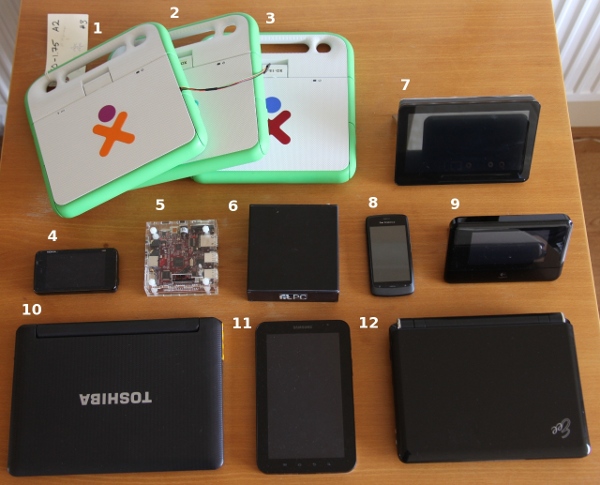So yesterday the 11.3.0 release of the XO-OS went gold. Its the first release to support the ARM based XO-1.75 and as a result the XO-1.75 is also the first commercial product to be based on Fedora ARM! This is the culmination of over eight months of solid work for me.
There’s a number of interesting points of these releases that the Fedora community might not be aware of. The 11.x releases of the OS have been derived from Fedora 14. Pretty much the entire release is built from mainline Fedora with very few differences, and most of those are patches to the kernel including build related stuff, and a few patches to the Sugar UX to assist with deployments. I strongly suspect that the 11.x releases are the largest deployment of Fedora 14 anywhere 🙂 and probably also of the gnome desktop and its components too.
Moving forward from this release we’re investigating moving the OS release process to mirror rawhide. We’re aiming for the XO-OS 12.1.0 release to be based on Fedora 17 and be released around a month after the main Fedora 17 release. Its going to be a massive release as its encompassing a move of the Sugar UX to gtk3 and gobject-introspection and associated underlying changes as well as jumping to other newer technologies like systemd and NetworkManger 0.9. I’ll be doing a release of Fedora 16 on XO for the XO-1 and XO-1.5 with the latest sugar 0.95.x development release for olpc/sugar developers and others that are interested in testing. I’ll also be doing regular snapshots from rawhide throughout the release process.
One of the advantages I see in moving to rawhide is that we’ll be testing the functionality the OLPC uses and depends upon as its being pushed to rawhide which means we can catch all breakages as early as possible and file bugs or generally bother people while its fresh in their minds rather than trying to get fixes for things that broke in the dev cycle two releases ago and that the developer likely doesn’t have any interest in any longer.
So for all Fedora people out there with various releases of OLPC XO hardware gathering dust now is the time to dust it off and play again as there’s new stable releases on F-14 and soon to be various releases on the latest and greatest Fedora releases. I announce all releases to the Fedora OLPC list. The XO-1 is even getting faster with each new Fedora release so there really is no excuse 😀
